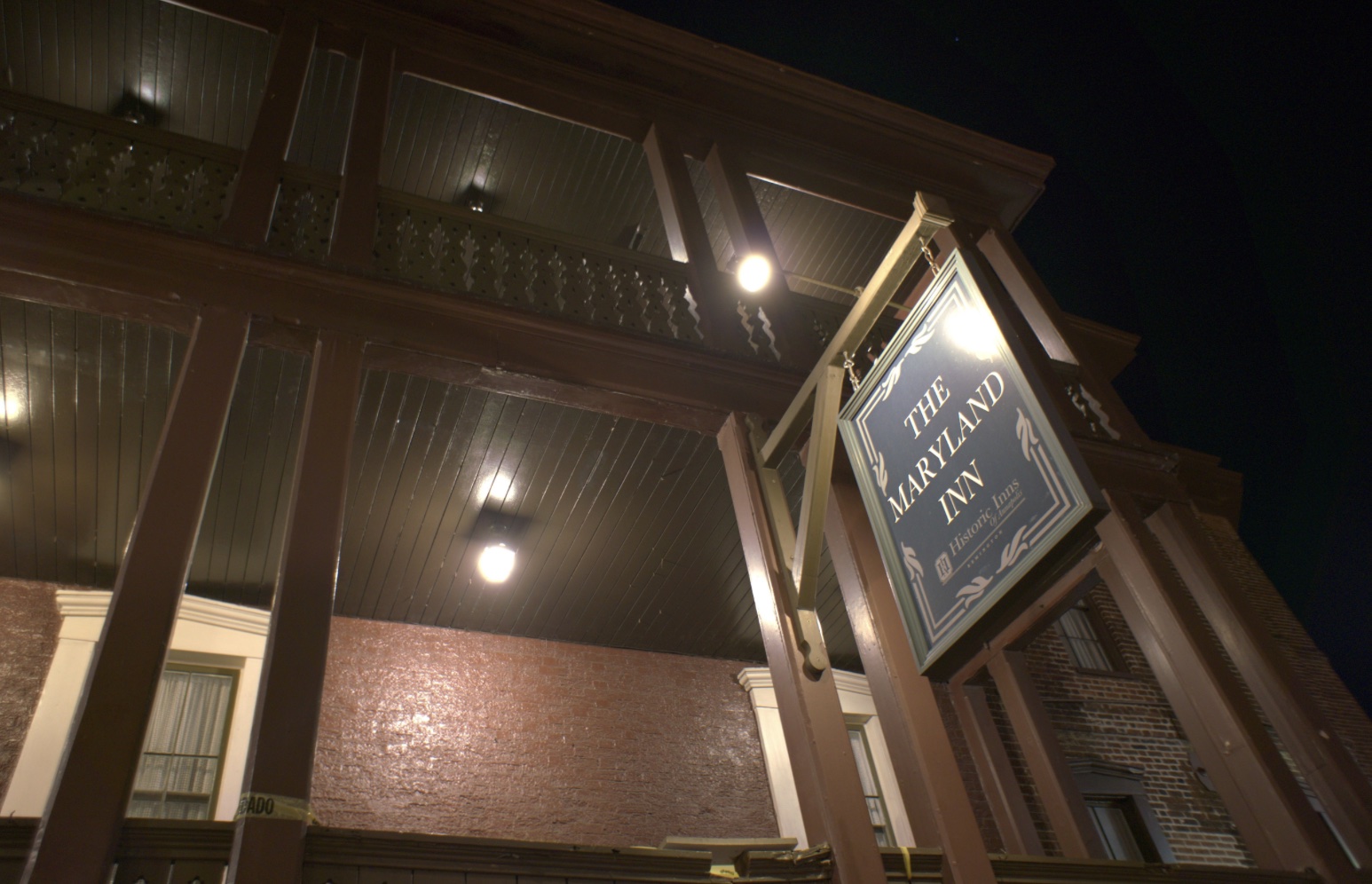
Currently holding the record for America’s longest-running, continually-operating hotel, the Maryland Inn has been the site of unspeakable terrors for 250 years. Built in 1772 by Thomas Hyde, a respected merchant and civic leader, this four-story hotel is made up of 39 bedrooms and suites, conference rooms, and a restaurant, with each room said to come with its own ghost. Permanently situated on 16 Church Circle in the heart of Annapolis, the Maryland Inn is one of three historically rich inns dating back to the end of the Revolutionary War.
It has been known by many names, such as The Maryland Hotel, McCollough’s Hotel, & Hotel St. George, and remains the only eighteenth century Annapolis inn still in operation. With so much rich history, famous figures, and strange incidents having all played a part in the extensive legacy of the Maryland Inn, it’s no surprise that this hotel has collected some serious baggage over the years—and not just luggage of its many visitors.
History buffs might remember that Annapolis briefly served as the first peacetime capital of the newly-formed United States of America from November of 1783 to August of 1784. Here, on January 14, 1784, the Treaty of Paris was ratified by Congress, therefore ending the Revolutionary War with Great Britain. The city has long been synonymous with the fight for freedom and independence, making it a must-see destination for any lover of American history.
Annapolis’s significance as a prosperous city before, during, and after the Revolutionary War meant that it attracted famous leaders over the years, including multiple Founding Fathers. Important dignitaries such as Thomas Jefferson, Benjamin Franklin, Alexander Hamilton, Marquis de Lafayette, John and Samuel Adams, and George Washington all stayed in
Annapolis at one point in time during their travels. But the peacetime would not last, as the War of 1812 would soon terrorize the nearby Chesapeake Bay, putting Annapolis residents on high alert for the next two years. The city would later go on to become a significant location for Union Forces during the Civil War, who used the capital city as their preferred disembarkation point for troops arriving by ship from the northern states.
Just steps away from the Maryland Inn is where George Washington, Commander in Chief of the Continental Army, famously resigned his military commission, giving the country permission to democratically elect its first leader. During and after the Revolutionary War, the Maryland Inn also continued to be a popular lodging choice for governors and statesmen. It also acted as a “house of entertainment” for Annapolis’s prominent figures, firmly cementing its status as an iconic city landmark.
Plenty of guests have checked into the Maryland Inn, but some have never checked out. For decades, frightened travelers have reported seeing strange figures roaming the halls at night and experiencing other chilling incidents during their stay. Visitors and employees frequently complain of smelling tobacco smoke in the empty dining room, often finding objects moving out of place. A handful of spirits have long haunted the inn, including a rowdy group of drunken Union Soldiers. Guests have also reported hearing disembodied singing; perhaps, the soldiers singing drunken wartime tunes.
The Inn’s most famous ghost is known simply as “The Bride,” a lost spirit who’s said to reside on the fourth floor. The tale goes as follows: Long ago, a woman came to Annapolis from North Carolina to celebrate her nuptials with a man known as Mr. Charles Campell. He sailed off to sea, hoping to earn enough money for them to buy the property and settle down, and told his fiancé to meet him at the Maryland Inn after his commission was complete, so they could finally be together.
But tragically, as Charles walked to the inn to greet his soon-to-be-wife after months apart, a horse-pulled cart came down the hill. It was too heavy to stop and crushed Charles on the cobblestone street. The bride allegedly witnessed everything and threw herself from a window, ending her own life in a fit of sorrow. Both are said to haunt the Maryland Inn, as many have reported seeing the wispy apparition of the Bride pacing back and forth at the end of their bed at night, seemingly gathering the courage to jump.
Today, the Maryland Inn is still a thriving hotel in the center of Annapolis and serves as a poignant reminder of the city’s Golden Age. Its current property manager is Remington Hotels, who own each of the Annapolis Historic Inns. Since 1953, there’s been a particular emphasis on preserving this historic hotel, and owners who appreciated the inn’s importance in Maryland’s history began a restoration designed to preserve its Colonial design while providing it with modern amenities.
In 2022, the Historic Inns of Annapolis — the organization responsible for the Maryland Inn, Governor Calvert House, and the Robert Johnson House — celebrated its 250th anniversary, commemorating 250 years since the Maryland Inn was first founded in 1722.
A gala, wedding fair extravaganza, open house, and many other special events were held in honor of the occasion. Check out our in-depth America’s Most Haunted Hotels and Inns article for more on some of the nation’s spookiest stays, and check back for more information in future blog posts.
Sources Cited:
https://www.historichotels.org/us/hotels-resorts/historic-inns-of-annapolis/history.php
https://www.historicinnsofannapolis.com/history
https://en.wikipedia.org/wiki/Historic_Inns_of_Annapolis